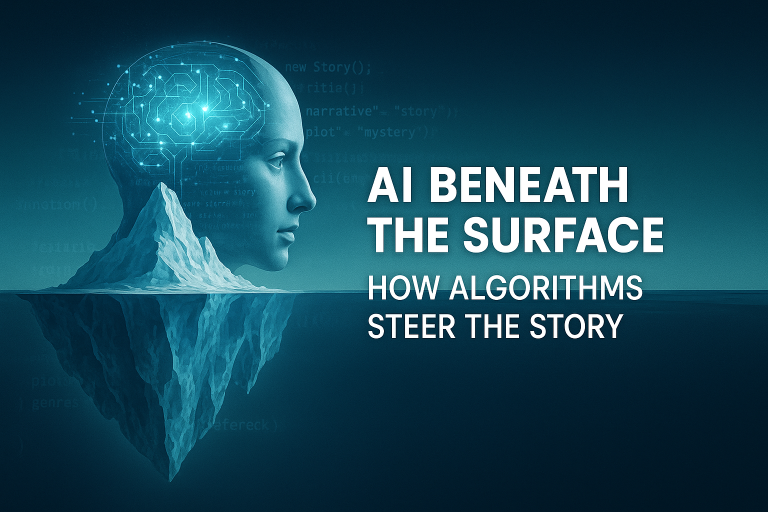He watches the hero hesitate at a crossroads, not because a writer told him to, but because an algorithm weighed motivations, fears and past choices. In modern games, artificial intelligence sits beneath the surface like an unseen playwright — nudging characters, remixing events, even rewriting stakes on the fly. What once felt like scripted corridors now unspools as living drama, calibrated in milliseconds by code.
In multiplayer hubs and single‑player epics alike, the same logic that spins reels in ganesha fortune slots can steer branching quests and dynamic encounters. Probability tables, reinforcement loops and player‑behavior models all hum in the background, shaping what he sees next. The result is a subtle choreography: systems guessing what will delight, surprise or challenge, then serving it up before the player can blink.
Why AI Took the Director’s Chair
Studios turned to AI for far more than just dazzling enemy pathfinding. Several pressures converged: expanding worlds, ballooning budgets and audiences demanding replay value without copy‑pasted missions. When a studio wants every run to feel distinct, algorithms become indispensable. Key drivers include:
- Scalability of Content — Procedural tools generate side quests, loot tables and dialogue variants at a pace human writers cannot match.
- Player Modeling — Systems analyze input patterns to tune difficulty, pacing and reward cadence in real time.
- Narrative Elasticity — Branching story graphs adapt when players ignore main quests, still delivering coherent arcs.
- Cost Efficiency — AI augments small teams, stretching creative output without proportional headcount growth.
These forces explain why storytelling engines now resemble data pipelines as much as writers’ rooms.
The Toolkit Beneath the Plot
Behind the curtain, specific techniques keep the drama flowing. He may never see the spreadsheets, but they drive his “organic” moments:
- Utility‑Based Decision Making — NPCs score possible actions (fight, flee, trade) and pick the highest value, creating believable spontaneity.
- Behavior Trees — Modular nodes let designers stitch complex routines quickly, while AI prunes or grafts branches at runtime.
- Markov chains and language models — they splice dialogue and lore fragments on the fly, keeping the voice consistent while sidestepping repetition.
- Reinforcement Learning — Bosses “learn” player habits over repeated battles, countering spam tactics without cheating.
- Procedural Generation with Constraints — Levels and items are shuffled within designer‑set boundaries, keeping chaos fun rather than frustrating.
Each layer adds plasticity to the experience, ensuring the game reacts instead of merely playing back.
Risks of Letting Code Call the Shots
Handing narrative reins to algorithms isn’t a free win. There are pitfalls that developers — and players — quickly notice:
- Coherence Drift — Overly modular scenes can feel disjointed, like a TV show with missing episodes.
- Emotional Flatness — Data excels at pacing, less at poignancy; moments risk feeling “optimized” rather than heartfelt.
- Exploit Loops — Players discover patterns the system didn’t foresee and farm them, breaking balance.
- Ethical Gray Zones — AI tuned for engagement can veer into manipulation, nudging addictive loops rather than meaningful play.
- Debugging Nightmares — Emergent bugs are harder to reproduce when every path is unique.
Balancing freedom with authored impact remains the core design challenge in AI‑driven storytelling.
Players as Co‑Authors
When algorithms react, players sense authorship. He notices NPCs remembering insults, factions retaliating, weather shifting to reflect chaos he caused. That feedback loop grants agency — but it also demands responsibility. If every choice echoes, rage‑quitting a quest line can ripple outward, closing doors he did not know existed. Smart games signal these stakes subtly, teaching him to read the system’s language just as he reads a novel’s foreshadowing.
Studio Rituals in the Age of AI
Team culture shifted alongside technology. Writers, designers and data scientists huddle over shared dashboards, tuning sliders rather than hard‑coding beats. Common practices include:
- Playtest Telemetry Reviews — Weekly sessions dissect heatmaps, death spikes and dialogue skip rates.
- Narrative A/B trials — two quest versions launch simultaneously, and the data determines which one stays.
- Synthetic Player Bots — AI agents stress‑test story systems at scale, uncovering dead ends before launch.
- Ethics Checkpoints — Committees audit retention tactics to avoid predatory design.
These rituals turn intuition into iterative craft, with spreadsheets and storyboards sharing equal weight.
The Road Ahead
Tomorrow’s games will likely deepen this fusion. Slimmed‑down language models could riff side‑character banter in real time, while emotion sensors pick up on frustration and tweak the pacing accordingly. Cross‑session memory could let sequels remember what he did years ago, echoing consequences across franchises. At the same time, guardrails will tighten: creators will need transparency tools to show players when and how AI shapes outcomes, preserving trust.
Conclusion
Artificial intelligence under the hood does more than spawn smarter enemies — it reshapes the very rhythm of play. When algorithms set the plot, stories stop being single threads and become woven tapestries, different for each run yet bound by shared logic. He may never read the code that guides his adventure, but he feels its presence in every twist that seems “too perfect” to be random and “too unexpected” to be scripted. In that liminal space — between authored intent and computational possibility — modern games find their new narrative soul.


